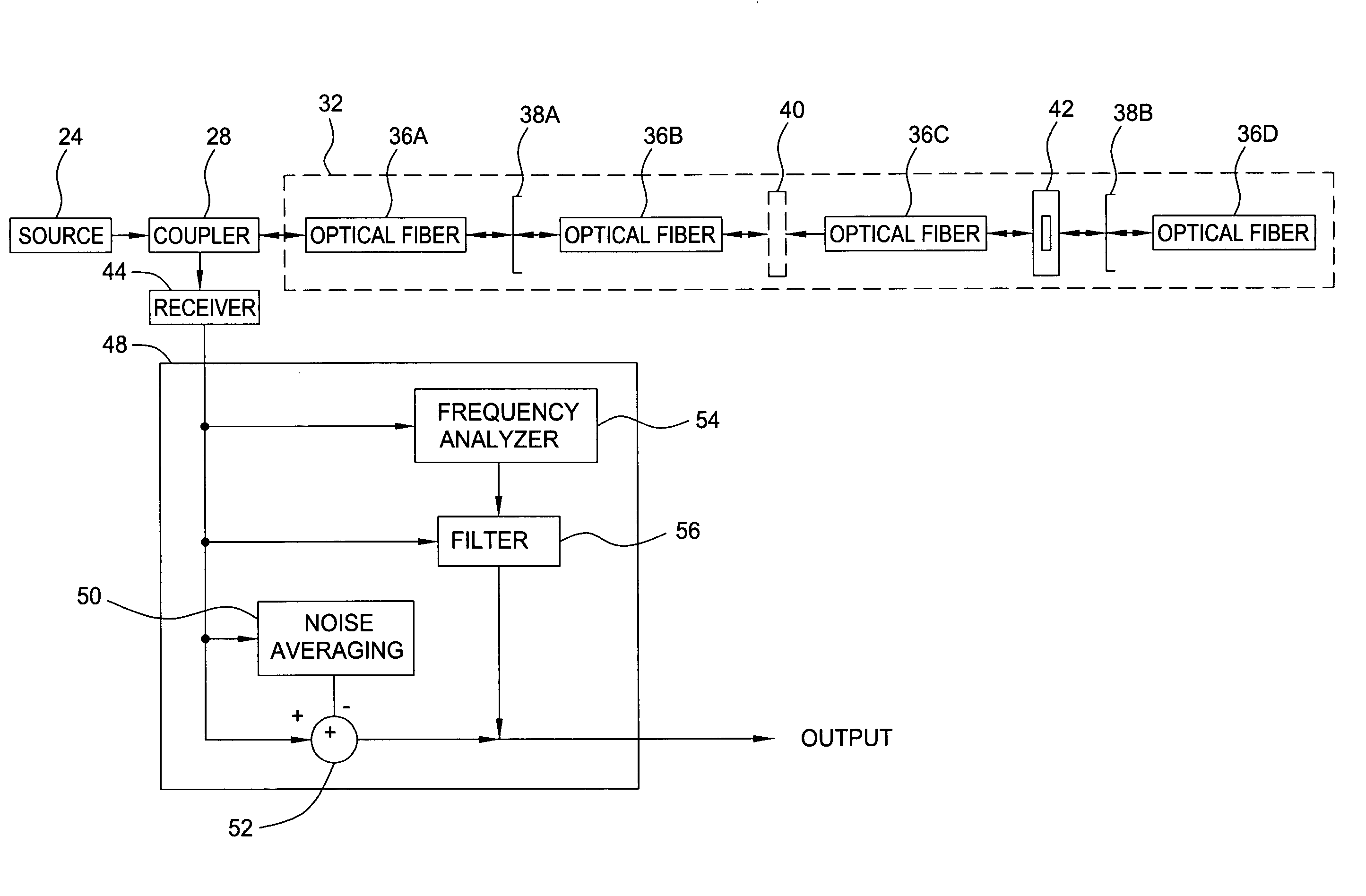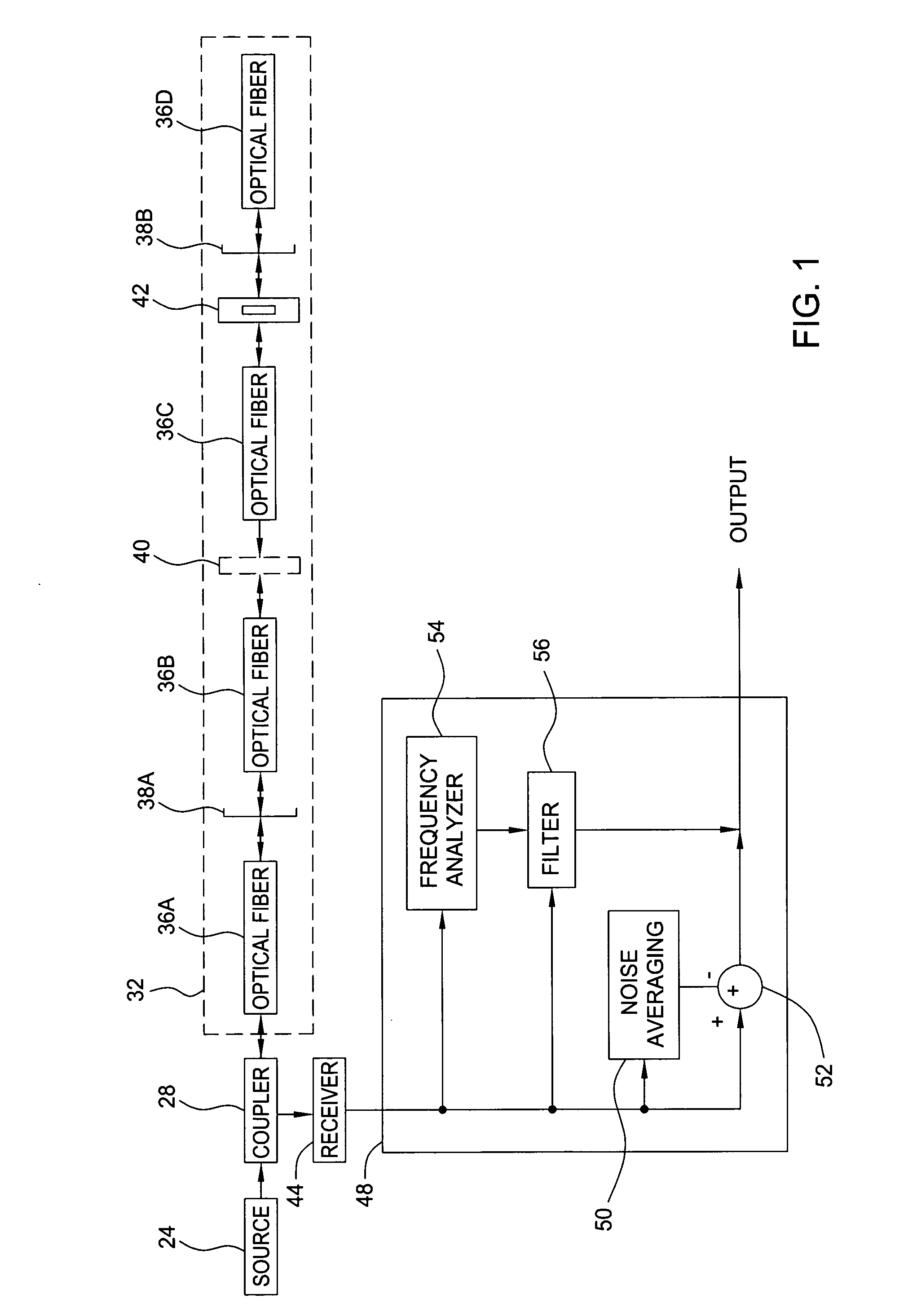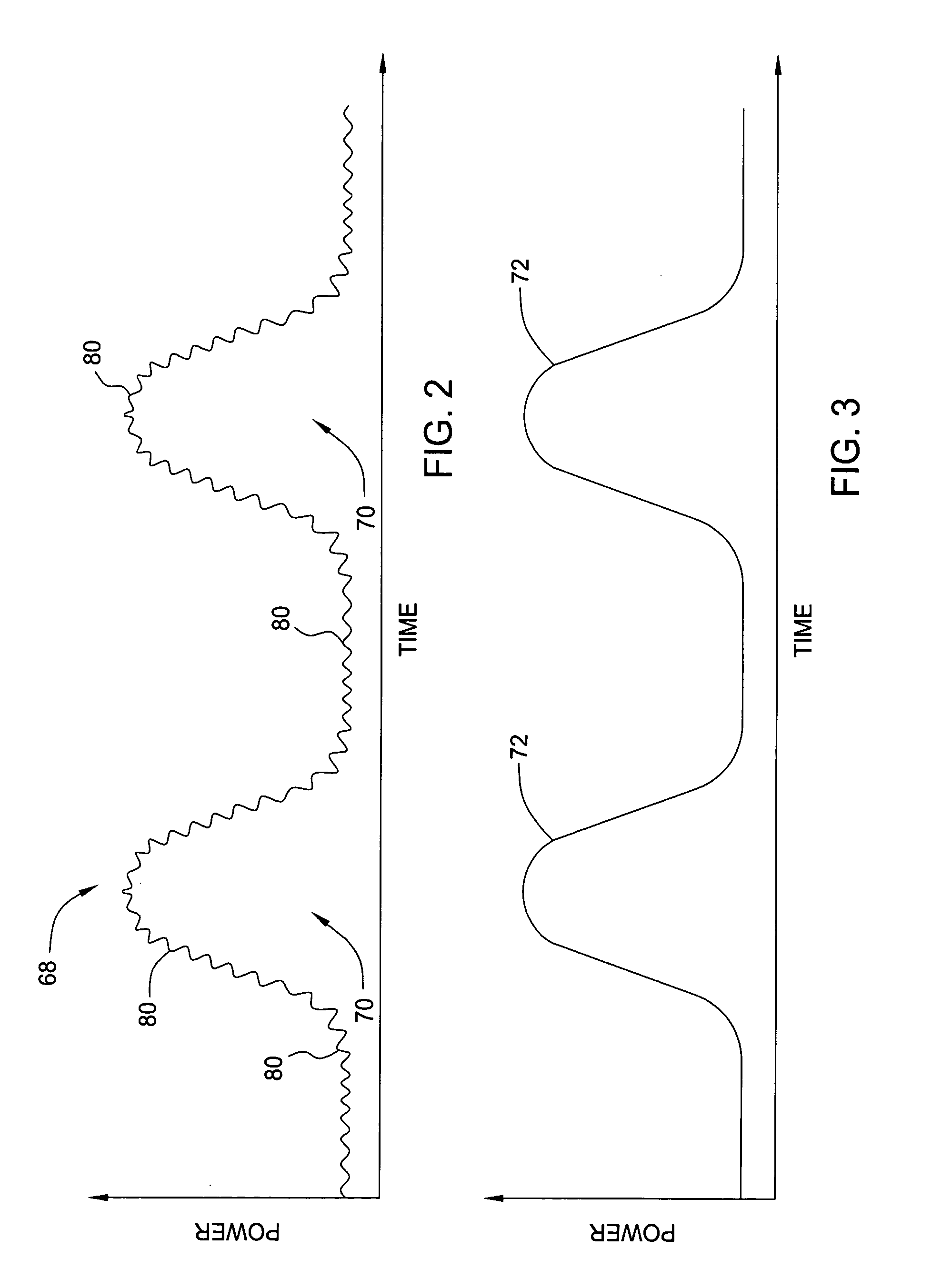Method and apparatus for optical noise cancellation
a technology of optical noise cancellation and optical sensor, applied in the direction of electrical apparatus, distortion/dispersion elimination, fibre transmission, etc., can solve the problems of discontinuities producing background noise levels, present problems to system designers, and reducing measurand resolution, so as to increase the signal-to-noise ratio
- Summary
- Abstract
- Description
- Claims
- Application Information
AI Technical Summary
Benefits of technology
Problems solved by technology
Method used
Image
Examples
Embodiment Construction
[0018]FIG. 1 illustrates a generalized apparatus 20 that is in accord with the principles of the present invention. That apparatus includes a light source for producing an optical signal, such as a scanning optical source 24 that produces a narrow bandwidth beam that sweeps across an optical spectrum. An optical signal produced by the optical source 24 is applied to a coupler 28 that couples the sweeping narrow bandwidth beam to an optical fiber network 32, e.g. an optical sensor array. The optical fiber network 32 includes multiple optical fiber sections, 36A-36D, which are coupled together by splices 38A and 38B and a connector 40. The splices 38A and 38B and the connector 40 represent discontinuities in the optical fiber network 32. The optical fiber network 32 also includes an FBG element 42. For simplicity, only one FBG element 42 is shown. Generally, the network 32 will comprise a plurality of FBG elements.
[0019] It should be understood that the subject invention is not limit...
PUM
 Login to View More
Login to View More Abstract
Description
Claims
Application Information
 Login to View More
Login to View More - R&D
- Intellectual Property
- Life Sciences
- Materials
- Tech Scout
- Unparalleled Data Quality
- Higher Quality Content
- 60% Fewer Hallucinations
Browse by: Latest US Patents, China's latest patents, Technical Efficacy Thesaurus, Application Domain, Technology Topic, Popular Technical Reports.
© 2025 PatSnap. All rights reserved.Legal|Privacy policy|Modern Slavery Act Transparency Statement|Sitemap|About US| Contact US: help@patsnap.com



